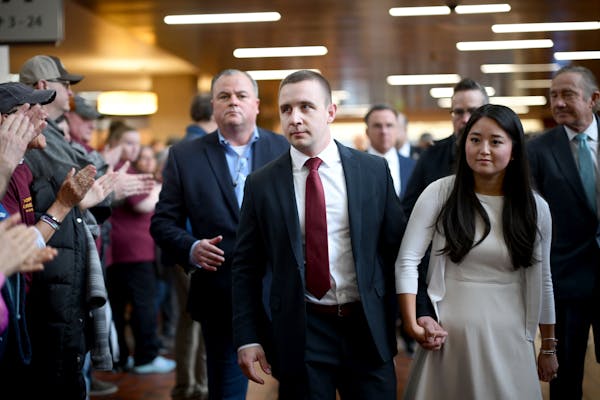When it comes to affordable housing, some metro-area communities have taken on more than their fair share. That's why at least two are rightly challenging state housing policies that can exacerbate concentrated poverty, racial segregation and unfair housing practices.
The inner-ring suburbs of Brooklyn Park and Brooklyn Center say that the Metropolitan Council and the Minnesota Housing Finance Agency have discriminated in the past — and that they are poised to adopt policy changes that will make that discrimination worse.
The two communities have joined the Metropolitan Interfaith Council on Affordable Housing (MICAH) in drafting an administrative complaint to the U.S. Department of Housing and Urban Development (HUD), which provides funds to the two agencies. The complaint, which is expected to be filed soon, raises important questions about the role of government in housing planning. The HUD response should give more definitive guidance about state and local responsibilities to promote racial integration and avoid intensifying concentrations of poverty.
Ideally, government housing policies should use public dollars to encourage and create mixed-income, desegregated communities. That lesson was hard-learned after some of America's largest cities built huge, high-rise housing projects in the 1950s and '60s. Those initially well-intentioned attempts at urban renewal created concentrations of the poorest of the poor, causing enormous challenges for cities. Eventually, some of those buildings were bulldozed to create more scattered-site, less-concentrated affordable-housing opportunities.
In Minnesota, a house or an apartment is considered affordable if a family of four with an income of $64,000 can live there. About 63 percent of Brooklyn Park's housing and 81 percent of Brooklyn Center's is classified as affordable. Those figures are substantially higher than that of the Twin Cities area in general, which is about 53 percent.
A 2006 Met Council funding policy and a recent draft revision of that formula states that Brooklyn Park needs 1,494 more affordable-housing units by the year 2020, while Brooklyn Center needs 163. Under that same formula, Edina and Mendota Heights — two cities with much less affordable housing — need 211 and 43 more units, respectively.
Met Council officials say the draft housing policy plan rewards communities that prioritize affordable housing. Their funding formula was based on factors including future growth, transit service, the location of jobs relative to where workers live and the amount of affordable housing already in a community. Fast-growing cities were projected to need more than slower-growth communities.
Met Council officials also point out that since 1996, several outer-ring suburbs have built the most new affordable housing. Blaine, for example, has added 1,716 units, while Farmington has built 1,692, Woodbury 2,282 and Maple Grove 2,296. Those communities are indeed taking on their fair share. But even more metro cities should be added to that list.
Research by University of Minnesota law Prof. Myron Orfield shows that too many outer-ring cities have ignored affordable housing and that this, in turn, has further impoverished poor communities.
Metro suburbs also should consider location when building new affordable housing. It isn't helpful to just build or rehab several blocks of apartment buildings and create more economic and racial segregation. Rather, communities should look at the success of smaller-scale urban villages with mixed uses and incomes.
"We are not opposed to affordable housing, but Brooklyn Park has done our share," Mayor Jeff Lunde told the Star Tribune. "Other cities have not … affordable housing needs to be more fairly and equitably distributed throughout the region.''
That's the approach that communities throughout the metro area — and the Metropolitan Council — should embrace.


